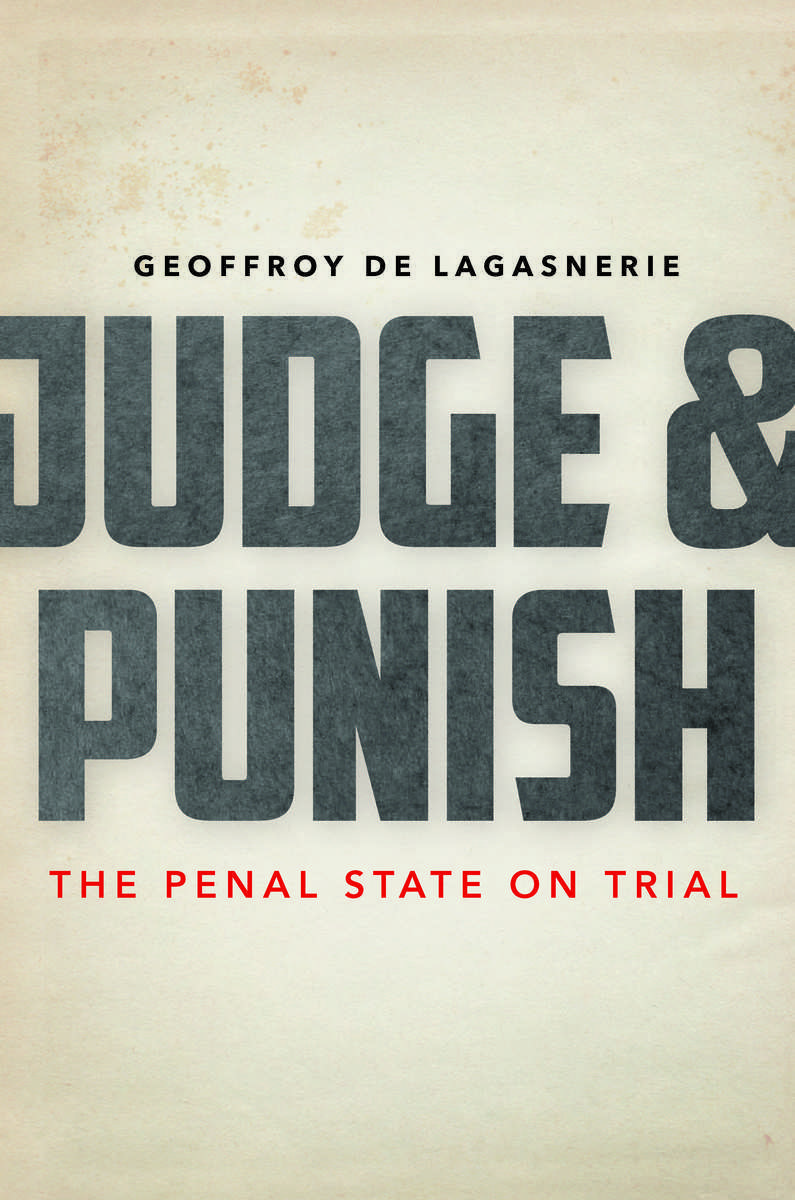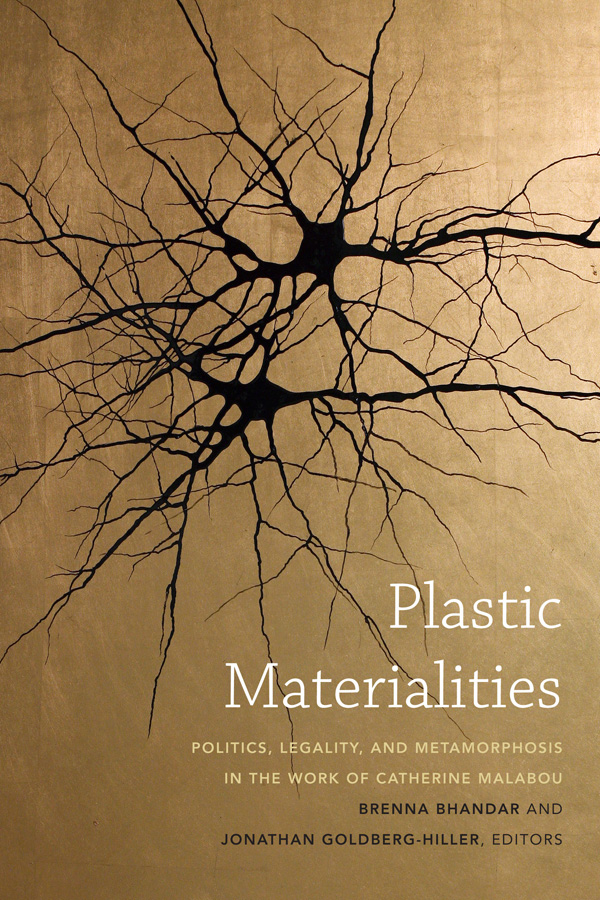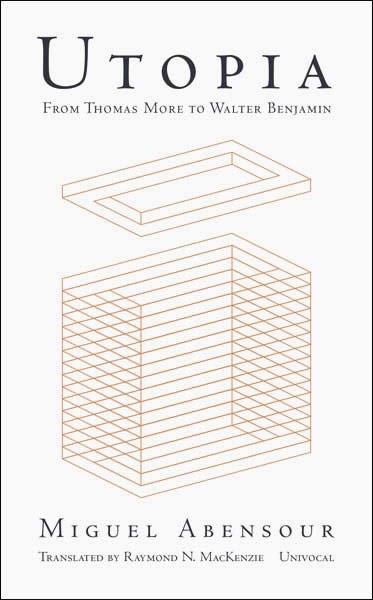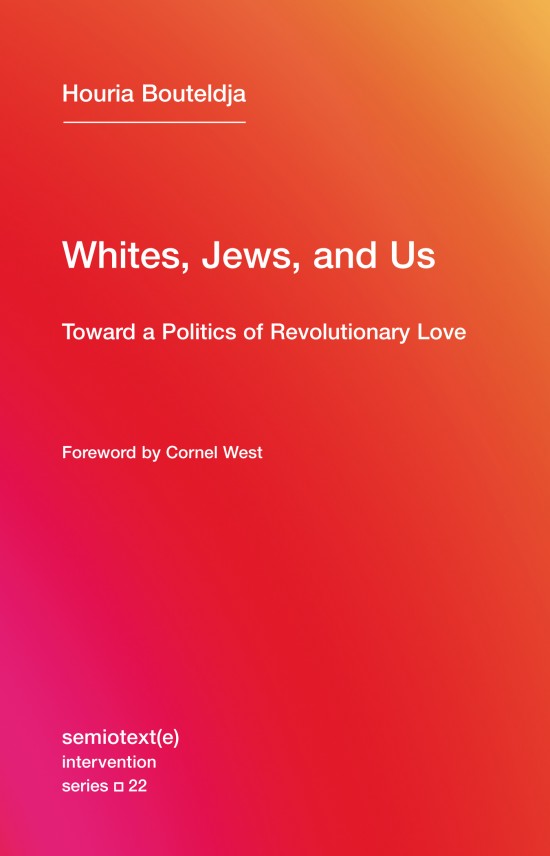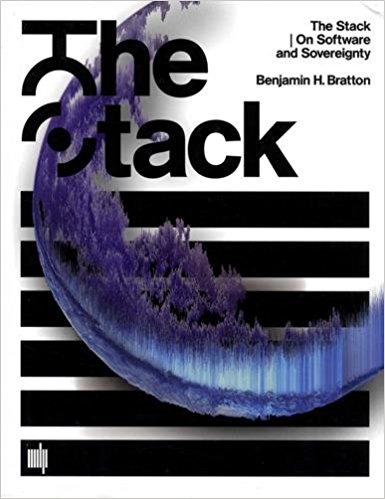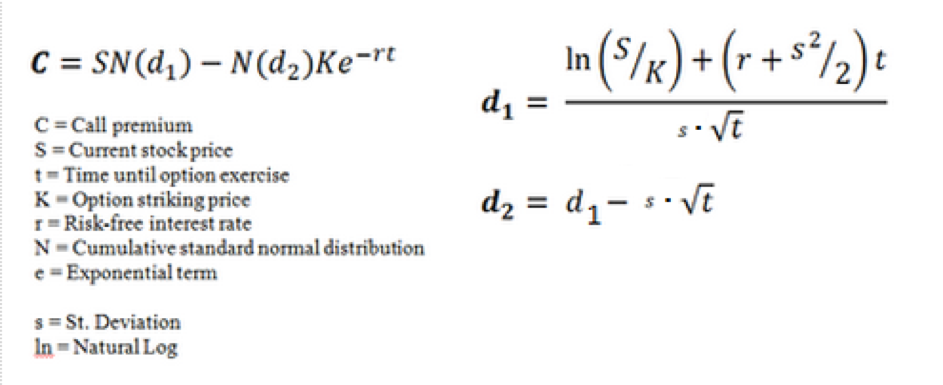by Peter Gratton
Review of: Geoffrey de Lagasnerie’s Judge and Punish: The Penal State on Trial, trans. Lara Vergnaud (Stanford, CA: Stanford University Press, 2018). Originally published in French as Juger: L’État pénal face à la sociologie (Paris: Librairie Arthème Fayard, 2016).
Geoffrey de Lagasnerie’s Judge and Punish: The Penal State on Trial, first published in French as L’État pénal face à la sociologie (The Penal State Confronts Sociology, Paris: Librairie Arthème Fayard, 2016) and translated well by Lara Vergnaud, is an at times brilliantly written polemic, decoding the ways in which we take our systems of judging and punishing as an ever-existing part of our background. This book is not a genealogy of the jurisprudential models used in the West and so is not akin to Michel Foucault’s history of the prison in Discipline and Punish (1975). Nor is it a long history of the birth of punishment as in Friedrich Nietzsche’s Genealogy of Morals (1887). Nor is it is call for prison abolitionism à la Angela Davis. But it is a searing and necessary brief against how we judge guilt and innocence in criminal trials that provide entree to the state networks of systemic violence against the poor, those of color, and the marginalized in general. De Lagasnerie proves an ample prosecutor of the current French system—the book is replete with memorable lines that will stick with any jury of his peers reading along—and his suit is one that can and should be brought in different jurisdictions across the West.
Yet his case all but falls apart as he comes to his summation. There, in the final chapters, after so many allegations that he is undertaking a “radical” critique of these systems, he argues for a neoliberal response to crime and justice that he argues has not yet occurred in practice. “If modern transformations of the state had truly been driven by a neoliberal logic,” he writes, “they wouldn’t have taken the form of a strengthening of the penal state,” he states as if it were a matter of fact (180). This left neoliberalism, he stipulates, would privatize much of the criminal justice system (175-6). He leaves unexplained the rapid increases in the prison population of the United Kingdom, the United States, Australia, and his home country of France, those places where fiscal austerity and neoliberalism have been strongest even as crime rates have decreased often to their historically weakest. How to explain this correlation between neoliberal governance and the steroidal increase in the rise of our prison populations if it’s not in fact a relation of causation? He offers no exculpatory evidence. His amicus curiae for neoliberalism—the idealist route when facts are not in evidence—is to say neoliberalism hasn’t been taken far enough: its hyper-individualism provides another “conception of judgment and law” (79) that has been ignored by a dépassé but still remnant state authoritarianism that neoliberalism has yet to conquer (62). Once this occurs, there will be a privatization of criminality, creating a “horizontal” relation between victimizer and victimized, with minimal intervention by the state, whose sovereign, top-down relation to those rendered guilty of crimes would all but disappear (183).
De Lagasnerie thus joins other followers of Foucault in recent memory who have taken a neoliberal turn, especially after the publication a decade ago of Foucault’s investigations of the incipient neoliberalism of the late 1970s in his 1978-9 lecture course, The Birth of Biopolitics. Based on a misreading of these lectures, those friendly to Foucault’s work like de Lagasnerie and Foucault’s Marxist critics both argue he welcomed neoliberalism’s critique of the totalizing, bureaucratic state as a means for countering state power. About this as a political strategy or even as a reading of the later Foucault, I have more than a reasonable doubt, but let me first let de Lagasnerie make his case before rendering a verdict at the end of this essay.
De Lagasnerie opens the book with his own reporting on many scenes of trials in Parisian courts. His method is sociological but not the kind of empirical sociology that merely describes what is underway. That, nevertheless, he does well: de Lagasnerie details the quotidian, mechanical way in which defendant after defendant is processed, with the high stakes matched only by the manifest boredom (malaise) of the trials themselves (9). Prosecutors and defendants alike use the same arguments over and over, and the system itself turns on such iteration or repetition. This is what makes the structure look as natural and inevitable as the Earth’s revolution around the sun. Everyone appears to be treated the same even as defendants of color, for example, are more likely to face graver sentences and are far more likely to be found guilty (201-2). “The very repetition” of the trials, de Lagasnerie writes, “immunizes the penal apparatus [le dispositif pénal] from criticism” (8). Every step in the process, from the arrest to pre-trial hearings to the trial to the judgment and sentencing, “operates,” he notes, “within the comfort of habit, an obvious and automatic way of reacting to illegal activity, unhindered by the need or desire to question what is happening” (8).
One shouldn’t for a moment diminish the vast asymmetry between the trauma for those involved and the almost nonchalant bureaucratic manner at play. The only questioning of the system occurs when this system fails to function, e.g., when a crime goes unpunished, when the lawyers don’t follow the procedure, and so on, but never concerns the system itself. Any discussion of factors beyond the facts and persons of the case are a priori and legally inadmissable. Even the most progressive of trial observers may say, sure, there is systemic racism, the police are corrupt, and so on, but he pulled the trigger, he is the guilty party, and despite it all, he is responsible and so he—not some system, not some history of racism, not someone or something outside the courtroom walls—must be punished. How, after all, does one put a system, let alone the state, on trial?
De Lagasnerie argues we continually fail to take the lessons of sociology into account–hence the subtitle of the French edition. We focus on the procedures of these trials—they are an object of endless fascination for viewers of films and television and readers of detective novels—but we invariably leave out the wider social context in which these trials take place. Against this manner of investigation, de Lagasnerie is attuned to how each case, despite its repetitiveness, individualizes the defendant: witnesses, supposedly expert or otherwise, are put on the stand to sketch out a character who would commit such an alleged crime. But these depictions invariably leave out any social context. Even the “slightest attempt to comprehend the cause of their actions,” he argues, “is deemed irrelevant to the point that when certain mechanisms or variables—gender, race, class, age—are mentioned, notably by defense lawyers, their importance is dismissed” (4). Even in the country that gave us structuralism, “the consequences of structural and collective forces are [left] absent, even as, a few inches away, on the other side of the [court] wall, their impact is visible for all to see” (5).
The book, then, operates also as an appeal for sociology, a discipline understood here as unveiling those very structures that create subjects, including the subjects of the law that we are from the very beginning. This sociological approach would “de-individualize” the trial system. Nevertheless, despite devoting his last chapter to “rethinking sociology,” Lagasnerie is unclear about just what his method is. Like a detective, one has to collect clues here and there throughout the book to attempt to solve the mystery oneself. At points he describes the juridical system as “unconscious” and at others says that sociology aims to “deconstruct” the processes of crime and punishment (e.g., 9, 35, 36, 62, 63, 137-8), while also saying that we should follow the insights of Pierre Bourdieu (e.g., 21, 40-41, 53-4, 63, 92-3, 197), or even the utilitarianism of the economist Gary Becker (188), providing even more confusion, since one can’t just pick and choose from these authors like an à la carte menu. In any event, here is one of his better explanations of what he overindulgently calls a “renewed method for philosophy and the social sciences” (206):
Questioning the criminal justice system requires unearthing the reasons why, when confronted by an event or act, we feel the need to identify, singularize, and judge rather than understand, generalize, and politicize: what purpose is served by an individualizing perception of events and the attribution of responsibility to singular subjects? Why create guilty subjects? What is the meaning of the system of judgment and of responsibility? (89)
To answer these questions, we need a “sociological perspective,” which
allow[s] us to become aware of everything that we implicitly assume and suppress in the act of judging. A social critique of the logic of the penal state allows for an understanding of the system of judgment in terms of its positivity, foundations, and functions; therefore, it allows us to see how it belongs to a more general economy of power. (99)
This reference to a “general economy of power” is reminiscent of Foucault, who argued that all forms of knowledge, including even the science of sociology itself, are implicated in movements of power. Despite relatively minor criticisms of Foucault at several points (e.g., 16-17), de Lagasnerie seems to agree with him, for example, when he describes the role of prosecution experts who use pseudo-concepts borrowed from psychiatry and criminology as working hand in glove with state power (110). Rather than taking the trial system as a matter of course, de Lagasnerie’s sociological approach would “artificialize reality” (83) and “denaturaliz[e] or rende[r] artificial the apparatus [dispositif] of responsibility,” that is, the trial system. This would have the effect of undoing our “mechanisms of denial” (6) by which we disavow the “repressive nature” (18) of the state as it acts—and it acts par excellence through the criminal justice system.
Here, though, he takes leave of Foucault, for whom power is not “repressive” or top-down. “We must cut off the king’s head” in political theory, Foucault famously said, not because there are never “vertical” forms of power, but because these result from lateral movements of disciplining and normalization. The state, then, is not the starting point for Foucault, which would make it an ahistorical and static entity from which power emanates, but is rather the result of movements “from below” that crystallize into this or that site in which the state is said to operate: the governmental psychiatric hospital, the prison, the military barracks, and so on. To say that the state is repressive misses the implication of each of us within the very systems of power he was attempting to outline. In this way, any libertarianism or anarchism, left or right, would fall to a Foucaultian critique: there is, as de Lagasnerie admits, always power that operates at a distance from the state (20)—the processes that normalize each and every one of us (think of mass conformism)—such that even if the state were to disappear altogether, power would still wind its way through each of us within a given society. This is why Foucault derided the idea that one could speak objectively about any given state of affairs: power operates through us, even in our most personal affairs, such in acts of sex, and our existence is the effect of contingent, historical, and, as de Lagasnerie puts it, “artificial” movements of power (8). In this way, we are subjectivized, not subjects freely choosing who we are to be. Thus, we are not subjects who choose to enter into the law but are rather “a subject of the law” that is “subjected to and confronted by the state’s construction of reality and having to live with it” (15-16). That is to say, the state’s vision of reality could not exist without docile subjects who answer to the law as a matter of course.
For Foucault, this does not mean we can simply exit from that reality to a vision of another, since we are the creation of our particular historical milieu and the matrices of power within it. There is no God’s eye view or objective place from which to judge this reality as better or worse than any other: the point of his genealogies of the prison, sexuality, biopower, and so on, was not to make normative or ethical claims. To do so requires thinking of knowledge without power, a disinterested power, which Foucault denied throughout his work. This is not to say, for example, that Foucault did not engage in political activism when it related to the French prison system, which he did. This didn’t mean that he didn’t look for counter-forms of power on the margins of society that could perhaps provides practices of freedom not overdetermined by our disciplinary relationships, which he did. But this also meant that any work by Foucault the author had an interest and was invested in how that knowledge could be used strategically within the games of power at play as he was writing in the 1970s. To put it another way, there is not, for Foucault, an “outside” of power.
This problem is not just one for Foucault: Marx argued he could not envision a communist society because he was produced within a capitalist system and any such vision would be idealist, even as he never tired of categorizing all the ways in which workers within a capitalist system were alienated from the products of their labor. The same goes for Jacques Derrida, whose deconstruction always noted the ways in which we speak borrows from the very systems we would wish to critique, or for decolonial thinkers such as Frantz Fanon, who set out to show the ways in which the colonized interiorized the means for their own exploitation and domination, or for feminists whom snarky conservatives believe ought not to wear dresses and so on—as if they, too, could leave the choices on offer within intertwining systems of patriarchy at home, at work, and within what we call politics in the limited sense of state governance. De Lagasnerie at times seems to get this point, describing well that the nature of subjectivity is not some metaphysical problem afar from our juridical and judicial systems:
The justice system functions as an objective possibility in our lives that each of us must take into account and that shapes each one of us as a result (my emphasis). …None of us is sure to escape justice either; indeed, none of us do. It is a part of our everyday lives. Rare are those individuals who will never find themselves facing a judge or lawyer, the threat of a prison sentence or damages, or the eventuality of pressing charges or being sued. But even those who never have any direct contact with the justice system will have been nonetheless unavoidably forced to take into account its existence and demands—the potential to be accused and/or convicted of a crime—if only precisely to avoid it, either by respecting the law or by adopting strategies of concealment. (7)
The violence of this system is not “intermittent,” but “underlies the very nature of the legal order” (38). De Lagasnerie justifiably argues that political theorists too often focus on tidying up the procedures of governance, while ignoring the violence that underlies them (42). In sum, while political theorists are happy to describe the violence that pre-existed the political, or the chaos that would ensue without a given political system, they are loathe to deal with the consequences of their theories for those judged guilty of not following the social contract. As de Lagasnerie puts it, “the task that political philosophy has assigned itself can be defined as follows: imagine a way to describe the state without mentioning violence; ensure that our relationship to the law is neutralized; and offer a depoliticized perception of politics” (42). For these theorists, the rule of law has been one of the greatest advances of Western civilization: all fall under the law and the subjectification mentioned above makes us responsible to the whole of society: when we break the law, it is not a lateral trauma against another individual, but against the state. Hence, in the United States, for example, cases are brought by the “people” of such and such jurisdiction against a defendant, as represented by a district attorney or other prosecutor. “Modern justice is a system in which interindividual actions,” as he puts it, “are reshaped by the state into actions against ‘society’” (154).
Political theorists thus disavow the bloody products of their own thinking. There is no law without its enforcement, as Immanuel Kant once put it, and de Lagasnerie pulls no punches in describing just who should be brought into the dock: “[W]hat the judge does, objectively, is harm. To judge is to inflict violence. All legal interpretations inflict suffering on the individuals to whom they’re applied, whether it be by imprisoning them, taking away their property, or killing them” (37). Where dominant narratives depicts a neutral site in which justice is blind and any punishments are meted out neutrally, for de Lagasnerie, the “courtroom becomes the scene of an assault” (38, his emphasis). He writes:
Living under the rule of law means living in a context in which the state has the right to dispose of us. Contrary to what a large proportion of political theory maintains, being a subject of the law does not mean, first of all, being a protected and secure subject. We are first and foremost subjects who can be judged—that is, imprisoned, arrested, and convicted. We are vulnerable subjects, dispossessed in relation to the logic of the state. (40, original italics removed)
Here, de Lagasnerie offers an advance over Foucault, who often underplayed “juridical” power—the stuff of the entire legal apparatus—in his considerations of how we are normalized as subjects. De Lagasnerie suggests, rightly, though, that it is through the criminal justice system that these norms are enforced in the most vicious terms; it is this that makes us precarious subjects. Anyone who has been poor, of color, or on the margins of our societies knows deep within their bones this precarity. We need only think of the gruesome and grueling ways those in African American communities of the U.S. are under constant police surveillance or how one is punished for being poor: a unpayable fine for a broken tail light on the car needed to get to work becomes a bench warrant, which in turn becomes time in jail, which means the loss of that job and a criminal record denying one future employment—and the state is not done with its work yet. The uprisings in Ferguson, Missouri, five years ago were sparked by the fatal shooting of Michael Brown by police, but it was already a community under siege, like so many other minority communities across the U.S., U.K., and in France: the average household in Ferguson had three arrest warrants each, a later U.S. Department of Justice report found, with 16,000 out of 21,000 people in the community, largely African American, wanted by the law. This is the rule of law as it functions outside of theory and even if de Lagasnerie is vague about just what structural factors are in play (for a sociologist, he has an annoying tick in his books of merely mentioning “structures” and “systems” but never identifying them in any particularity), the problem of recidivism among the so-called criminal population is but another way to say that from within the legal system, there is no exit: voting rights are often taken away, future employment is limited largely to manual and impermanent labor, and merely being in one’s backyard becomes a killable offense. The criminal justice system is at once individualizing (you failed to show up for that warrant) and yet is also aimed at entire classes of people always already deemed a “criminal element.” It is in this context that de Lagasnerie is right to say, “Rather than saying that the state ‘sentences to death,’ we must say that it kills [assassine]; that it doesn’t arrest individuals but ‘abducts’ [enlève] them; that it doesn’t imprison people but ‘wrongfully detains’ [séquestre] them; that it doesn’t force them to pay fines but ‘robs’ [dépouille] them” (60).
De Lagasnerie insightfully notes that the French criminal justice system defines responsibility, as in the U.S. and elsewhere, negatively: the law only lists when one is not responsible for given crimes, but generally not what responsibility positively means. Hence, there is a veritable right, especially for agents of the state and those aligned with it, to irresponsibility, a right to impunity. There are those who are held responsible—and then are all those who have the right to irresponsibility, not just people with the wealth to avoid the criminal justice system altogether but first and foremost agents acting in the name of the state. What then is to be done? He writes:
Our challenge then becomes to reflect on the possibility of creating new narratives. That means reformulating what happens in order to develop a new awareness of reality that will prompt us to assign the cause of events not to individual agents but rather to collective logics rooted in concrete situations. We must question our urge to judge and orient our energy toward transforming political totalities rather than toward punishing individual actions, which are merely the occasional and local manifestations of those totalities. (132)
Surely this chafes at our very understanding of ourselves and others: to live is to judge, it seems. We measure our personal lives in terms of small writs of wrongs righted through micro punishments: the cheating partner is given time in the clichéd dog house, the wayward employee is reprimanded and faces loss of work, the perpetually late student is given marks off her participation grade, the sloppy waiter is punished with a bad tip, a recent book out receives, ahem, its deserved review. The list is endless. We don’t do these things, we tell ourselves, because it is in our interest or because we like it. Every parent says this: it hurts me more than it hurts you, the child I am punishing; it is what everyone would do in our place when we punish you. In the courts, this is obvious: the judge shouldn’t have an interest in who wins. He or she is merely to decide based upon the evidence before her and not take the first or second side: she sits literally above the prosecutor and defendant, the first and second parties. This is key today: at some point in Western history, we invented what is called the third party, an objective position where we pretend we don’t have an interest or desire in the results, a point Foucault takes up in his 1970-1 Lectures on the Will to Know when he studies ther advent of the rule of law and “objective” forms of judging in ancient Greece. But I don’t need to tell you how this story ends: study after study shows, whatever the intent of the judge, an interest is served: those who are white and/or wealthy face far fewer penalties in our criminal justice systems. But we couldn’t have knowledge as we understand it—that is, philosophy, history, and sociology—without this objective, third-party stance either: we are judging objectively what is metaphysical, what happened in history, and so on, or those disciplines wouldn’t exist. You can see, then, what Foucault means by power/knowledge: power operates in our courts and uses models of knowledge, while those models of knowledge themselves are a form of power. After all, the courts are nothing but knowledge producing places: endless files line the offices of our courthouses, all in rendering the power of the state based on criminological and other theories.
The “fantasy” of the objective third party position thus removes our own implication in the micro-punishments we mete out, a point ignored by de Lagasnerie, but one that is crucial to the apparatus he describes. After all, by “putting the state on trial,” de Lagasnerie repeats the very logic his work should be undermining. He maintains that his own “scientific approach” can “produce knowledge” that allows us to “step back from ourselves,” even as he had described earlier in the book the ways in which who we are allows no such “step back” outside the subject of the law (210), indeed going so far as to say that these structures are “unconscious” (7), though one wonders just how one steps back from what cannot by definition be brought to conscious awareness. De Lagasnerie thus will want two things at the same time: “sociology would force us to break with that inclination in order to experience what we might call an immediately political relationship to the world” (132) and that we take a “critical distance…from the system of judgment” (11). But if we are formed in and through being a subject to the law, how is such a critical distance possible? And isn’t any notion of a critical distance an intellectual mirror of the judging we see in criminal trials, that is, that we as scientists, sociologists, or philosophers can sit above the fray and pass judgment, even as de Lagasnerie sentences us to take “an immediately political relationship to the world”? In any event, we are to pass judgment over this system of judging by to compare it to a reality beyond or beneath these power relations:
Part of the violence of the justice system comes from the fact that the penal state governs us by forcing us to correspond to an image of the subject that is at odds with our true mode of existence. It is this disconnect that causes and encapsulates the violence of the juridical order. In fact, that disconnect is itself violent. Being a subject of the law means being subjected to and confronted by the state’s construction of reality and having to live with it. As a result the legal subject experiences a certain amount of dispossession and vulnerability. …The interesting question here is not our creation as subjects of the law but precisely the fact that we are not, in reality, subjects of the law. (15-16)
Here, we could raise various ontological questions of just how, as subjects to the law, we are to discern such a reality, or whether what “we” are and how we view ourselves is always politicized, always within formations of power, and therefore, not in some nature or existence elsewhere.
At this point, de Lagasnerie, to correct this violence, suggests two different tactics at once: first, we must begin to think responsibility as “collective” and within “systems of relationships within which individual agents exist” (93). This means, in a sense, suspending individual judgments: “We must question our urge to judge and orient our energy toward transforming political totalities rather than toward punishing individual actions, which are merely the occasional and local manifestations of those totalities” (131-2). No doubt, then, this means a complete transformation of everything we think of under crime and punishment: a truly radical move, it would be a legal theory without precedent but one that is necessary for thinking another future not imprisoned in the systems of the now. And yet, this “ethical task” of “reconstituting collective logics” (132) is to be supplemented by a neoliberal approach that de Lagasnerie valorizes as well, one that re-individualizes us outside such collective logics so-called criminality. Here he supports Becker’s approach:
If we read, for example, economist Gary Becker’s seminal texts on crime and punishment, it’s clear that their underlying objective is to reject the relevance of transcendent totalities (“public order,” “state,” “society”) that undergird the repressive use of the law and to restore actions and their consequences to what they really are (my emphasis), meaning singular events or facts: a criminal act is an interpersonal interaction in which one individual wrongs another. A crime is a lateral and local matter that brings together victims and guilty parties, not, as modern law would have us believe, individuals and the state, individuals and society, or individuals and the law….Ultimately, claims Becker, we could say that victims are nothing more than involuntary creditors. … Damages therefore become the favored “punishment.” (173-4)
This is not quite an adequate reading of Becker, who is more than happy to describe crimes as a cost to “society,” but nevertheless let’s see where de Lagasnerie wants to take neoliberalism:
Neoliberal rationality is based on a refusal to accept the validity of a plane of reality higher than the discordant multiplicity of individuals and the relations between them. From this perspective there are only individuals and individual relationships. (175)
If this is the case, then what to make of his brief for sociology with which the book begins and ends? By way of an answer, he notes later in the book:
Because the penal state individualizes causes in order to judge, critiquing the workings of the law requires us to reflect on the violent effects produced by that concealment of social forces. But because the state socializes interindividual actions and their effects in order to punish, we must contrast it with a vision that dismantles the perceptions established by totalizing concepts such as society, collective consciousness, and the like. So, on the one hand, we are dealing with an opposition between a sociological vision and an individualizing one and, on the other, with a left-libertarian vision and a socializing one. (181)
In short, we are to replace thinking of judging criminality in terms of crimes against the state or the nation, one takes it, and more in terms of how they are “private singular matters … lived in a specific manner by the agents involved” (175), presumably in the shadow of the societal structures that de Lagasnerie describes. At no point does de Lagasnerie recognize the neoliberal view of the subject as antithetical to the sociological approach that he champions from the beginning to the end of the book. Each is to be a rational agent where all forms of interpersonal violence is to be perceived economically and privately. No doubt, de Lagasnerie is right to suggest that this would denude, in theory, the state of much of its power, but in practice it’s all-too-clear what would continue to occur, given that the state would linger in these affairs, as he notes, to make sure justice is served: those with money can simply pay off their “debts” while those who are poor won’t. And what will happen to them? The backstop answer is clear.
Neoliberal rationality, and all the more so libertarianism, is individualizing. It perceives rape, theft, injury, and attack for what they are: private, singular matters that, each time they occur, are invariably lived in a specific manner by the agents involved. The function of the law should therefore be to institute sanctions and compensation for the injury inflicted. The notion of horizontal, compensatory, or reconstructive law replaces criminal and vertical law. We have here a complete rejection of the idea, so essential to the state apparatus, that rape, theft, injury, and aggression constitute, above all else, disruptions of the public order, that they are acts contrary to society’s interests and should be punished for that very reason. (175-6)
The invention of crimes to mete out punishments, as Nietzsche argued, has a long history in the West, and the punitive society, as Foucault called it, is not undone by privatizing these affairs. Here the problem is not just philosophical but historical: we have seen this manner of justice before, and de Lagasnerie never takes up this history or the great inequalities of wealth in the present day. The history of the Greek city-states is one of ridding them of private suits on behalf of oligarchs. So too in ancient Rome, where there is a lesson: when the famous XII tables were published, the poor who had access to those who could read did not accede to the law; they revolted now knowing what the law was. Born in 1981, de Lagasnerie has grown up as political options were limited to variants of neoliberalism, where the state could seen as a “robber” through taxes and during which one could write texts calling for both a sociological approach and one that denies it at the same time—he never brings his own subjectification into account here. Hence, as he suggests we do for so-called “criminals,” I would want to put his own work into a context, a history, and a milieu where neoliberalism seems to be the only option. For a future worthy of the name, I hope it isn’t. I join him in wanting to condemn to death the system of judgement and punishing that exists today in France and elsewhere. Justice calls for nothing less, even as it is invented everyday, here and there, answering to the singular trauma of victim and victimizer, a trauma that can’t be accounted for or counted in dollars and cents.
Peter Gratton is a professor philosophy in the department of history and political science at Southeastern Louisiana University. He has written extensively on political and critical theory. He is currently writing a book that in part takes up the kinds of judgment used in the prison industrial complex.
